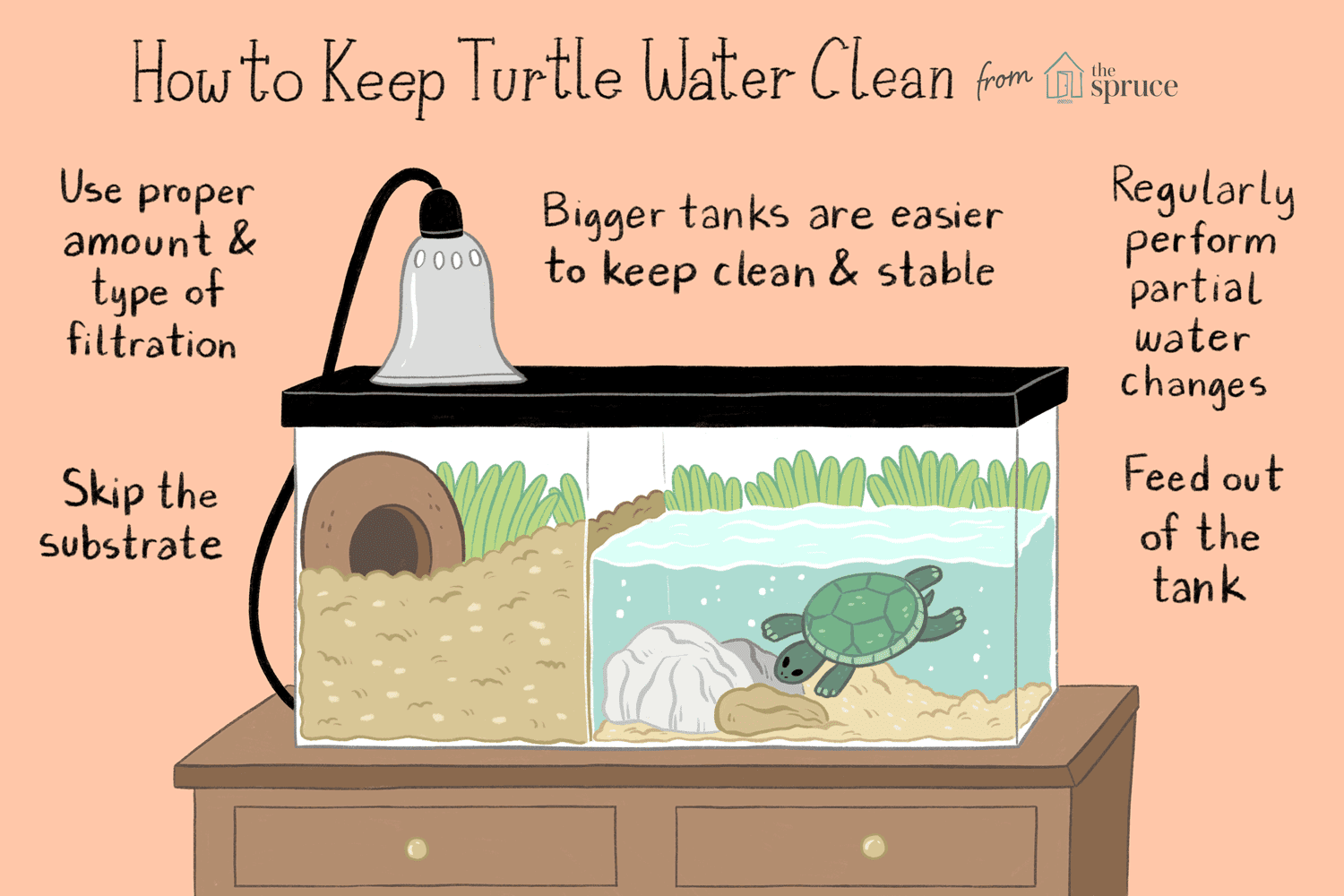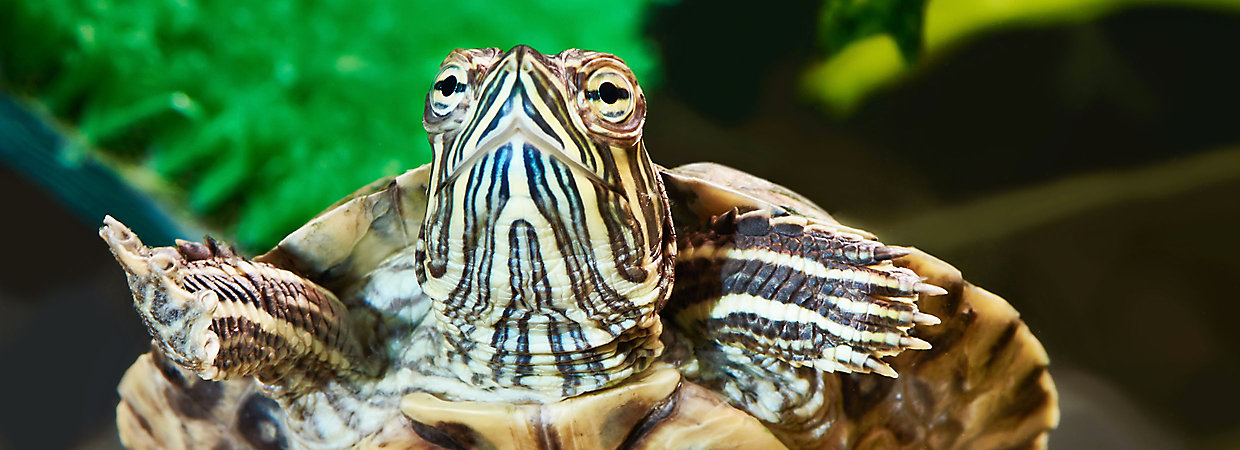So you’ve got a pet turtle and want to make sure their habitat is clean and well-maintained? We’ve got you covered! In this article, we’ll share some helpful tips and tricks to keep your turtle’s habitat in top-notch condition. From regular water changes to proper filtration systems, we’ll guide you on how to provide the clean and healthy environment your shelled friend deserves. By following these simple steps, you’ll not only ensure the well-being of your turtle, but also create a beautiful and enjoyable space for you to observe and interact with them. Let’s dive in and discover the secrets to keeping your turtle’s habitat squeaky clean!
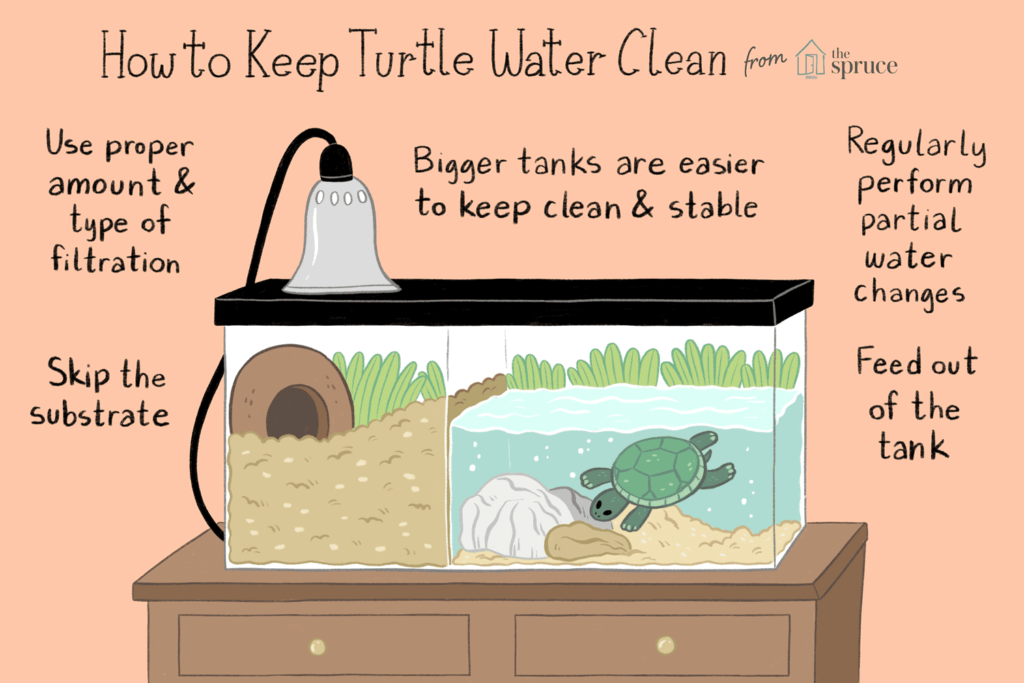
Choosing the Right Habitat
Consider the Size of Your Turtle
When it comes to choosing the right habitat for your turtle, it’s essential to consider the size and species of your turtle. Different turtles have different space requirements, so it’s crucial to provide them with a tank that is suitable for their size. Smaller species may be comfortable in a smaller tank, while larger turtles will need a more significant and spacious enclosure.
Choose the Right Tank
Choosing the right tank is crucial for your turtle’s well-being. Opt for a tank made of glass or acrylic, as these materials are easy to clean and provide better visibility. The tank should be large enough to accommodate your turtle comfortably, with ample swimming space. As a general rule, the tank should be at least four times longer than the turtle’s shell and twice as wide.
Provide Adequate Shelter and Hiding Spots
Turtles need shelter and hiding spots in their habitat to feel safe and secure. You can provide them with commercial turtle docks, caves, or even natural hiding spots such as rocks or driftwood. These hiding spots not only provide a sense of security for your turtle but also create an enriching environment for them to explore and interact with.
Setting Up the Habitat
Use Appropriate Substrate
Choosing the right substrate for your turtle is essential not only for aesthetic purposes but also for their overall health. Avoid using small particles that your turtle could potentially ingest and cause digestive issues. Instead, consider using larger particles such as river rocks or aquatic sand. These substrates can help maintain water quality by trapping debris and prevent your turtle from accidentally swallowing particles.
Install a Filter and Heater
Maintaining proper water conditions in your turtle’s tank is essential for their health and well-being. Installing a filter helps remove waste, excess food, and debris, ensuring the water remains clean and clear. Additionally, turtles are ectothermic, meaning they rely on external heat sources to regulate their body temperature. Therefore, a heater is necessary to provide them with the optimum water temperature they require.
Place Decorations and Plants
Adding decorations and plants to your turtle’s habitat not only enhances its aesthetic appeal but also provides an enriching environment. Live or artificial aquatic plants provide your turtle with hiding spots, and they also help oxygenate the water. Decorations like rocks, caves, and driftwood can create interesting landscapes for your turtle to explore and interact with, making their habitat more engaging and stimulating.
Maintaining Water Quality
Regularly Test Water Parameters
Regularly testing the water parameters in your turtle’s tank is vital to ensure optimal water quality. Test kits are readily available and will help you monitor crucial parameters such as pH, ammonia, nitrates, and nitrites. By regularly testing the water, you can identify any imbalances or issues and take appropriate measures to rectify them, ensuring a healthy and safe environment for your turtle.
Monitor and Control Temperature
Maintaining the proper water temperature is vital for your turtle’s health and well-being. Invest in a reliable thermometer to monitor the water temperature regularly, ensuring it stays within the recommended range for your specific turtle species. Make adjustments as necessary and use a heater to maintain a consistent temperature, as fluctuations can stress your turtle and make them susceptible to illness.
Keep Water Clean and Clear
Keeping the water clean and clear in your turtle’s tank is crucial for their overall health. Regularly remove any uneaten food, solid waste, and debris from the tank to prevent the accumulation of harmful bacteria and parasites. Additionally, perform partial water changes regularly to remove any toxins and maintain optimal water quality. A clean and clear environment promotes a healthy and vibrant turtle.
Feeding and Nutrition
Provide a Balanced Diet
Ensuring your turtle receives a balanced diet is essential for their overall health and well-being. Different turtle species have varying dietary requirements, so it’s crucial to research and provide them with the appropriate foods. A balanced diet typically consists of commercial turtle pellets, fresh vegetables, and occasionally, live or frozen prey such as insects or small fish. Consult with a veterinarian or reptile specialist to determine the best diet for your turtle.
Offer a Variety of Foods
Offering a variety of foods to your turtle is not only beneficial for their nutrition but also adds enrichment to their feeding routine. Experiment with different vegetables, fruits, and protein sources to keep their diet interesting and diverse. It’s important to note that not all foods are safe for turtles, so it’s essential to do thorough research and avoid foods that may be toxic or harmful.
Avoid Overfeeding
Overfeeding can lead to obesity and various health issues in turtles. It’s crucial to feed your turtle the appropriate amount of food based on their age, size, and activity level. Younger turtles may require more frequent feeding, while adult turtles may only need to be fed a few times a week. Monitor their weight and adjust their feeding schedule accordingly to ensure they maintain a healthy body condition.
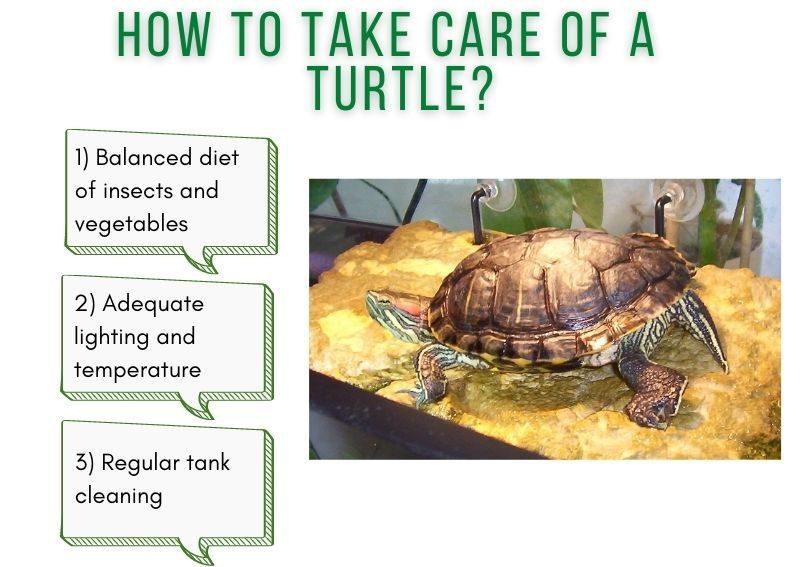
Monitoring Health and Hygiene
Observe Your Turtle Regularly
Regularly observing your turtle is essential for detecting any signs of illness or distress. Keep an eye out for changes in behavior, appetite, or appearance. If you notice any abnormalities, such as lethargy, lack of appetite, or unusual growths, consult a veterinarian who specializes in reptile care. Early detection and prompt treatment can make a significant difference in your turtle’s overall health and well-being.
Maintain Proper Hygiene
Maintaining proper hygiene in your turtle’s habitat is crucial for preventing the buildup of harmful bacteria and parasites. Regularly clean the tank, decorations, and any equipment using non-toxic cleaning agents. Ensure that your hands are clean before handling your turtle and avoid introducing contaminants to their tank. Good hygiene practices can help reduce the risk of illness and maintain a healthy living environment for your turtle.
Address Common Health Issues
Turtles can be susceptible to various health issues, including respiratory infections, shell rot, and parasites. It’s important to educate yourself about common health issues and their symptoms to ensure early detection and treatment. Regular veterinary check-ups are recommended to monitor your turtle’s overall health and address any issues promptly. Following proper husbandry practices and providing a suitable habitat can help prevent many common health problems.
Regular Cleaning Routine
Perform Regular Water Changes
Regular water changes are essential to remove toxins, waste, and maintain optimal water quality. The frequency of water changes depends on your turtle’s size and habitat size. As a general guideline, perform partial water changes of about 25-50% of the total volume every 1-2 weeks. This will help prevent the buildup of ammonia and other harmful substances, providing a clean and safe environment for your turtle.
Clean the Tank and Decorations
In addition to water changes, regularly clean the tank and decorations to maintain a hygienic habitat for your turtle. Remove any algae, debris, or waste that has accumulated on the tank walls, decorations, and substrate. Use non-toxic cleaning agents and rinse thoroughly to ensure no residues are left behind. Maintaining a clean tank not only promotes good water quality but also reduces the risk of disease and infection.
Routinely Check and Replace Equipment
Regularly inspect and maintain the equipment in your turtle’s habitat. Check the functionality of the heater, filter, and any other equipment to ensure they are working correctly. Replace any worn-out or faulty parts promptly to prevent disruptions to the habitat’s functionality. Properly functioning equipment is vital for maintaining optimal water conditions and ensuring the well-being of your turtle.

Handling Waste and Debris
Remove Solid Waste Promptly
Solid waste, such as feces, should be promptly removed from the tank to prevent the buildup of harmful bacteria. Use a net or a siphon to remove solid waste regularly during cleaning routines. Neglecting to remove solid waste can result in poor water quality, unpleasant odors, and potential health issues for your turtle.
Clean Filters and Water Circulation
The filter plays a crucial role in maintaining water quality by removing waste and debris. Regularly clean the filter according to the manufacturer’s instructions to ensure its effectiveness. Additionally, check the water circulation to ensure proper flow, preventing stagnant areas where waste can accumulate. Properly functioning filters and adequate water circulation contribute to a clean and healthy habitat for your turtle.
Manage Algae and Debris
Algae growth is common in turtle tanks and can be managed to maintain water quality and aesthetics. Regularly clean the tank walls and decorations to remove algae, using non-toxic cleaning methods. Avoid overexposure to light and manage nutrient levels in the water to prevent excessive algae growth. Additionally, remove any debris or leftover food promptly from the tank to prevent it from decomposing and adversely affecting water quality.
Preventing Disease and Infection
Quarantine New Turtles
If you introduce a new turtle to your existing habitat, it’s essential to quarantine them before introducing them to your current turtle. Isolating the new turtle for a few weeks allows you to monitor their health and ensure they are free from any contagious diseases or parasites. A separate quarantine tank will prevent the spread of potential illnesses to your current turtle.
Follow Proper Quarantine Procedures
During the quarantine period, observe the new turtle closely for any signs of illness or parasites. Consult a veterinarian who specializes in reptiles to perform a comprehensive health check-up. Maintain proper hygiene and quarantine procedures to prevent the spread of diseases and parasites. This precautionary step helps protect the health of your current turtle and avoids potential infections.
Consult a Veterinarian
Regular veterinary check-ups are crucial for your turtle’s overall health and well-being. Find a veterinarian who specializes in reptile care and schedule routine check-ups to monitor your turtle’s health. If you notice any signs of illness or abnormalities, consult your veterinarian promptly. With their expertise, they can diagnose and treat any health issues, keeping your turtle healthy and thriving.
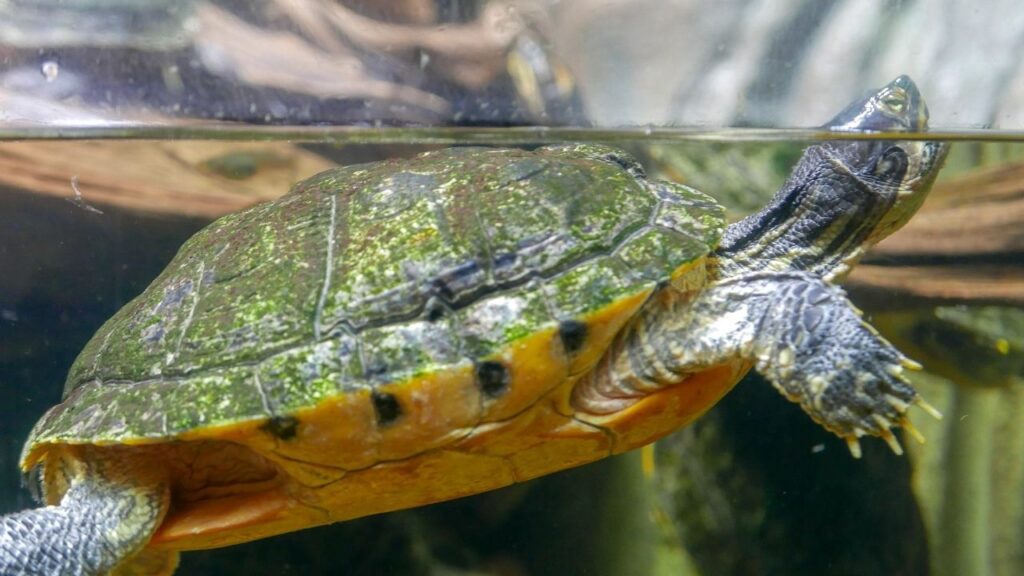
Maintaining Proper Lighting
Use Appropriate Lighting Fixtures
Proper lighting is vital for your turtle’s overall health and well-being. Invest in appropriate lighting fixtures to provide the necessary light and heat for your turtle’s habitat. Ensure that the fixtures are specifically designed for reptiles and that they provide the right spectrum of light. It’s also essential to position the fixtures correctly to ensure optimal heat and UVB exposure for your turtle.
Provide UVB Light Source
UVB light is crucial for your turtle’s calcium metabolism and overall health. UVB light aids in the synthesis of vitamin D, which is necessary for proper shell and bone development. Ensure that your turtle has access to a UVB light source for a specific period each day, as recommended for their species. Replace the UVB bulb regularly according to the manufacturer’s instructions to ensure its effectiveness.
Establish a Lighting Schedule
Establishing a lighting schedule is essential to simulate natural light cycles and provide your turtle with a consistent day-night cycle. Turtles require both light and darkness for proper biological functions. Use timers to ensure a regular lighting schedule, with approximately 12-14 hours of light and 10-12 hours of darkness per day. A consistent lighting schedule promotes healthy behavior and helps regulate your turtle’s internal clock.
Educating Yourself
Research Turtle’s Needs
Understanding the specific needs of your turtle species is crucial for providing optimal care. Do thorough research on their natural habitat, dietary requirements, and environmental conditions. This knowledge will help ensure that you create the most suitable and comfortable habitat for your turtle.
Stay Informed about Best Practices
The field of reptile care is constantly evolving, and it’s important to stay informed about the latest best practices. Join online reptile communities, forums, or social media groups dedicated to turtle care. Engage with experienced turtle keepers and experts to gather valuable insights and stay up to date with the latest information and advancements in turtle care.
Join Online Communities and Forums
Being a part of online communities and forums dedicated to turtle care is a great way to connect with fellow turtle enthusiasts. These platforms provide a space to ask questions, share experiences, and learn from others who have been caring for turtles for years. The support and knowledge gained from these communities can be invaluable in your journey as a turtle owner.
